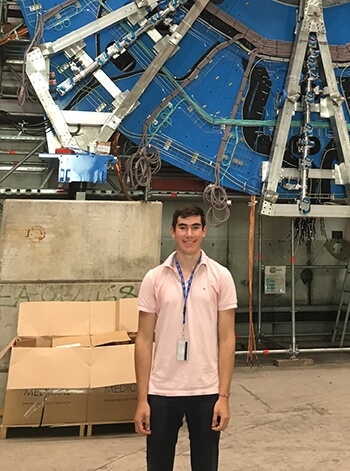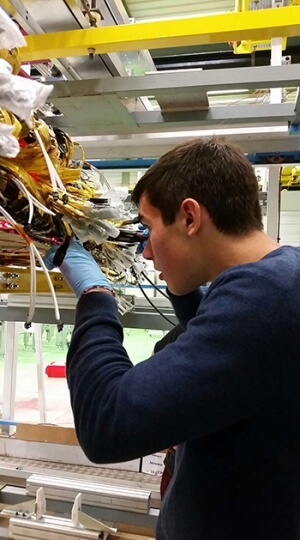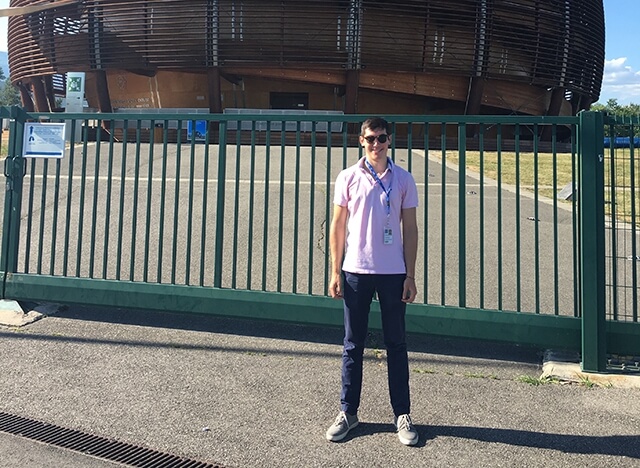Name: Thomas Satterthwaite
Concentration: Computer science and physics
Graduation Year: 2021
Hometown: Cranston, R.I.
Internship focus: Experimental particle physics
Internship location: Geneva, Switzerland
Describe your internship.
While working on the ATLAS Experiment of the Large Hadron Collider at CERN, I assisted in the development of the New Small Wheel, which is an improved muon detector. More specifically, I developed an improved algorithm for tracking particles through the detector, which is integral for data analysis. The algorithm that I devised is able to track particles orders of magnitude faster than the previous solution and it finds many more particle tracks. The Large Hadron Collider is currently shut down for upgrades and data analysis, so the New Small Wheel is meant to be installed before the collider begins running next year.
What is one of the most valuable lessons you learned from this internship, and why?
Learning how to work on a large scale project with members hailing from many professions, universities, and countries has been a tremendous experience. Furthermore, learning how to frame an individualized project within this environment has been invaluable.
What is one of the biggest challenges you faced during this internship, and why? How did you overcome it?
Finding what you’re looking for in a foreign grocery store was certainly a frustrating experience during the first few weeks. Practice makes perfect, however, and I got to try many new foods along the way.
What skills from your courses at SEAS helped you the most during this internship, and why?
The preparation in algorithm design provided by Data Structures and Algorithms (CS 124) was imperative in coming up with my divide-and-conquer solution to the particle tracking problem. Beyond this, my introductory physics courses helped provide the necessary background knowledge for the research (supplemented by individual study). Overall, it was a very rewarding experience to be able to combine my two concentrations: physics and computer science.
Why has this internship been a good experience for you?
Overall, this internship was a fantastic experience for me. In addition to providing me with valuable research experience and a sense of what particle physics research is like, it was a tremendous cultural experience. Living in Switzerland allowed me to connect with my Swiss heritage and to experience a new culture.
How do you think this experience could inform or benefit your future career path?
As I look towards pursuing graduate studies in physics, this experience has helped me decide on what branch of physics I would like to specialize in, and to learn about working at a major physics research institution.
How did you find this internship?
My professor for Wave Phenomena (Physics 15C), Melissa Franklin, Mallinckrodt Professor of Physics, works on ATLAS, so I ended up joining her research group for the summer.
Press Contact
Adam Zewe | 617-496-5878 | azewe@seas.harvard.edu


